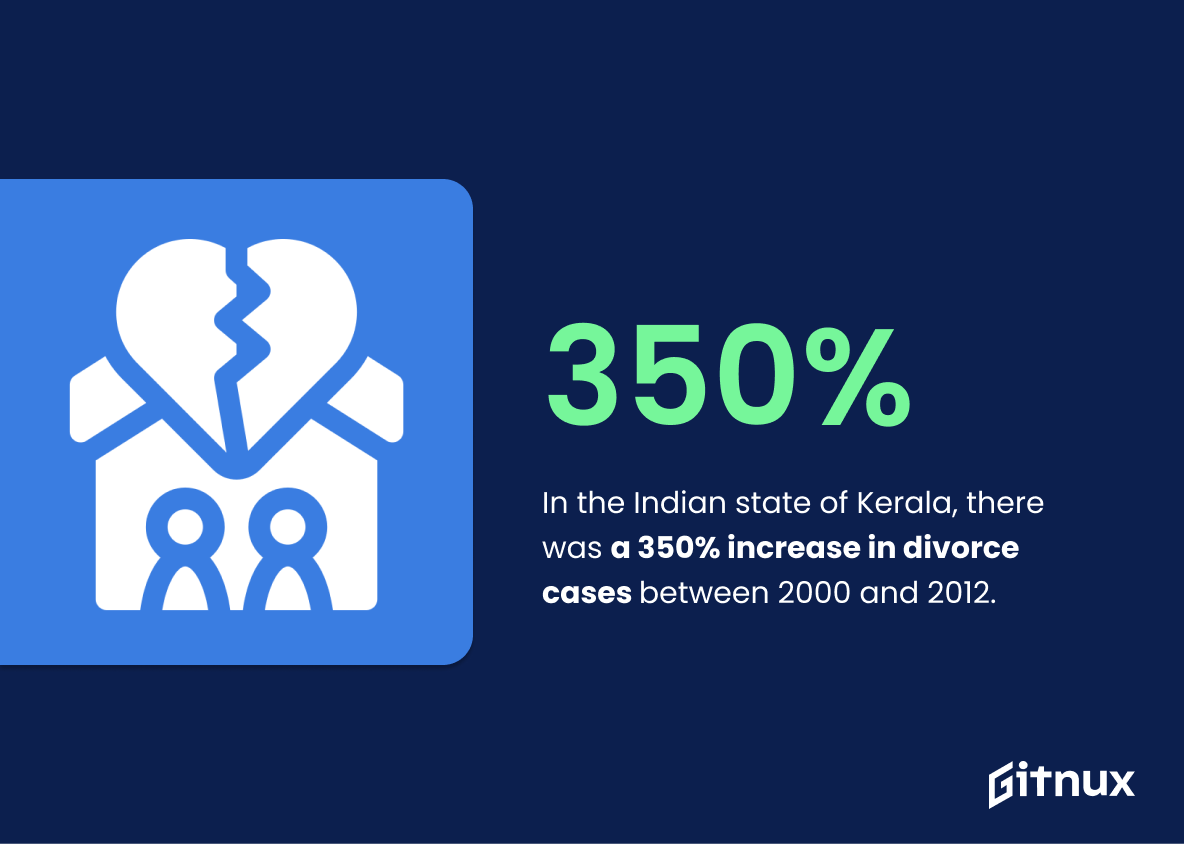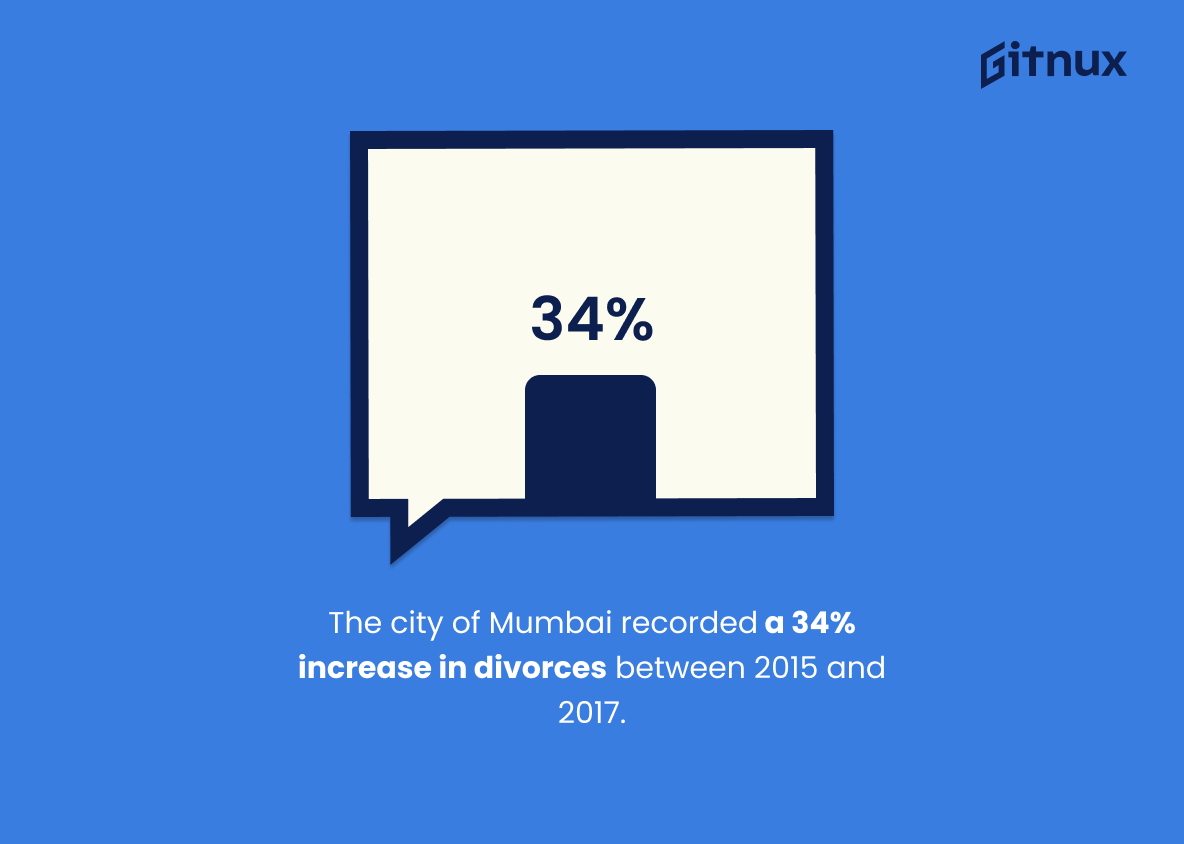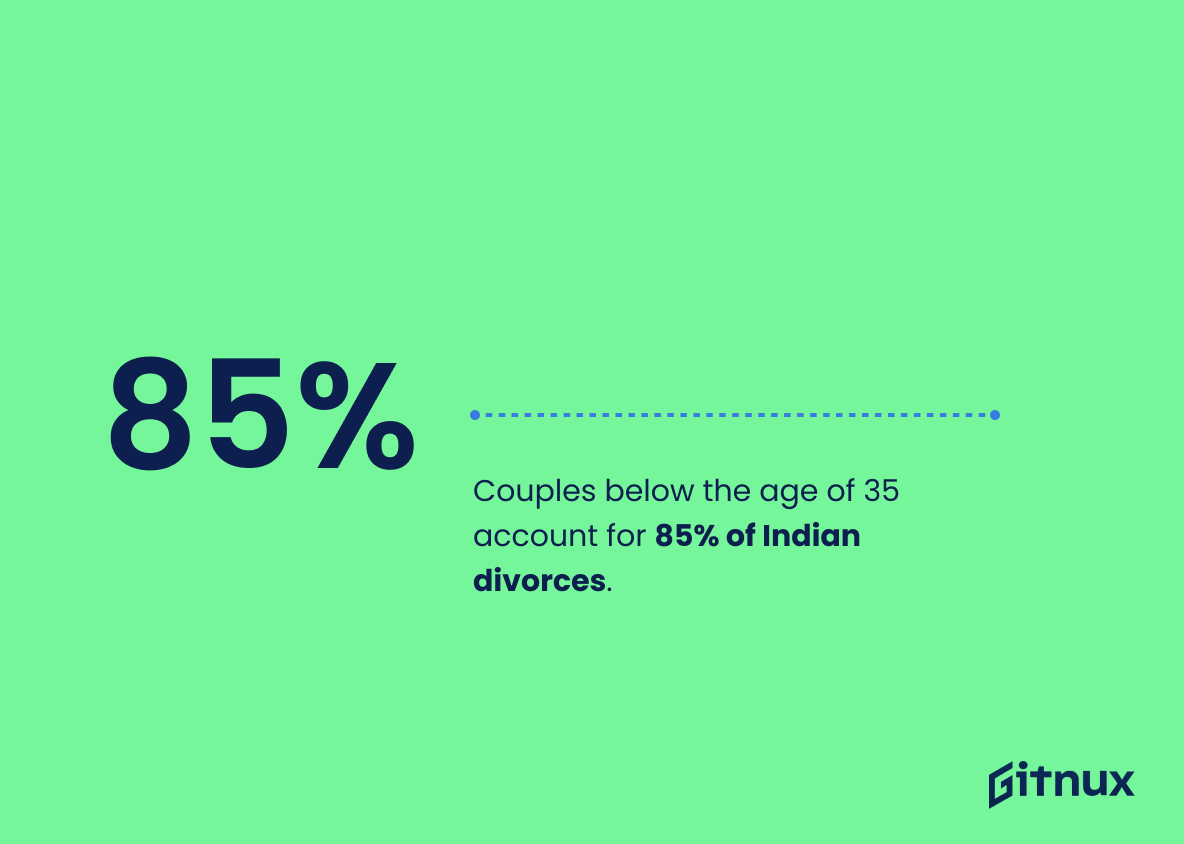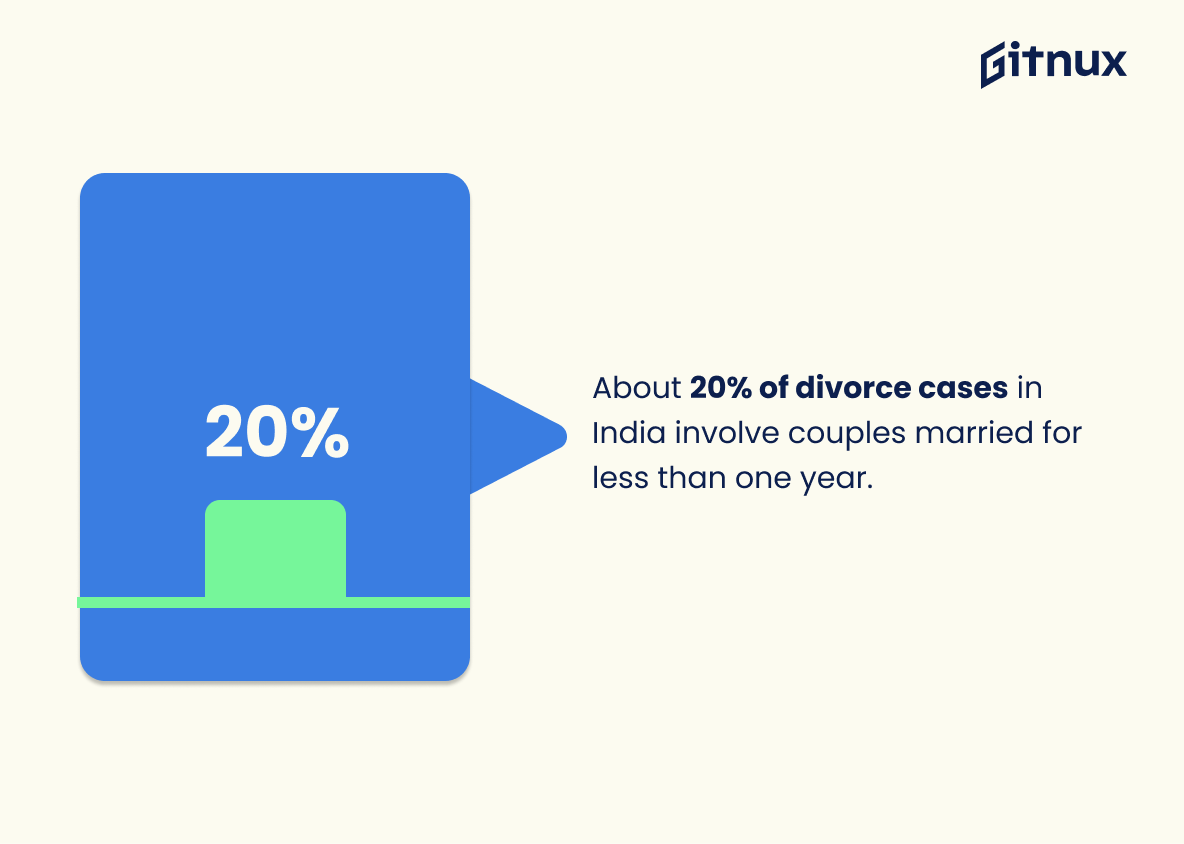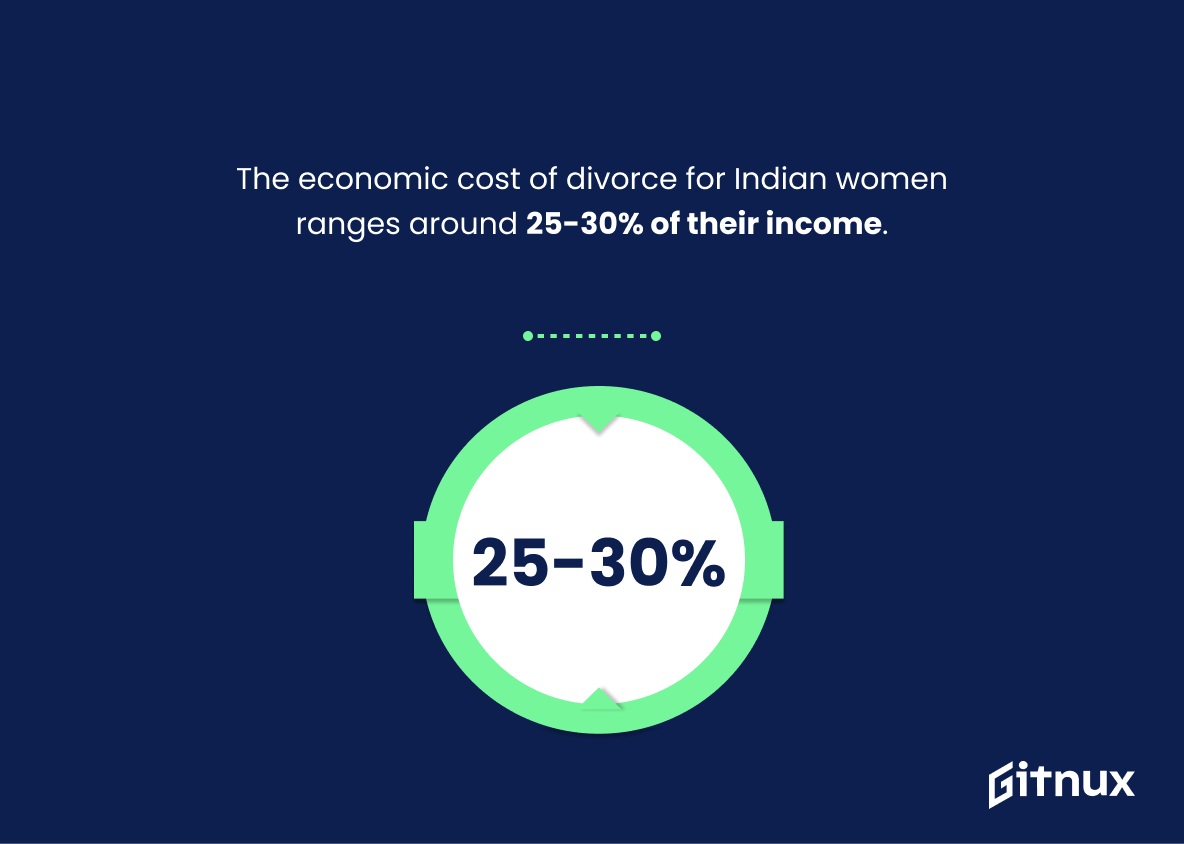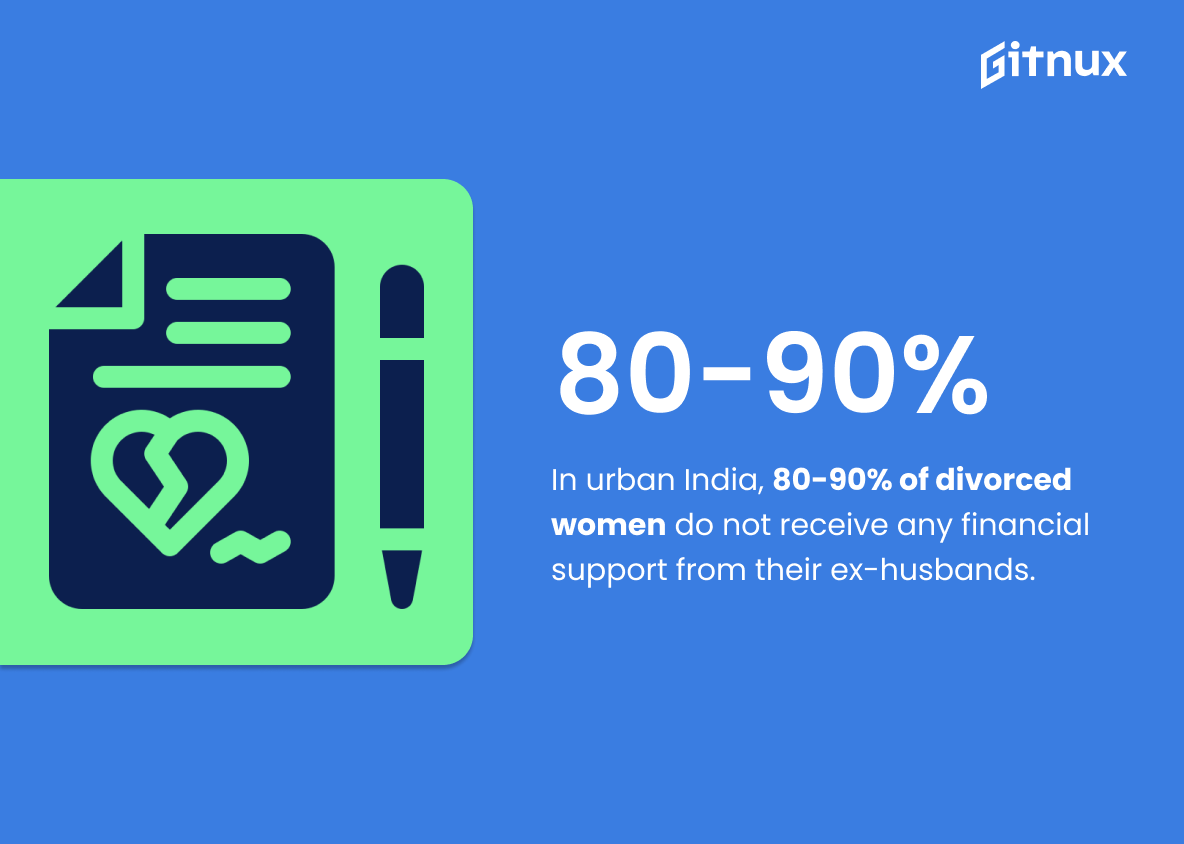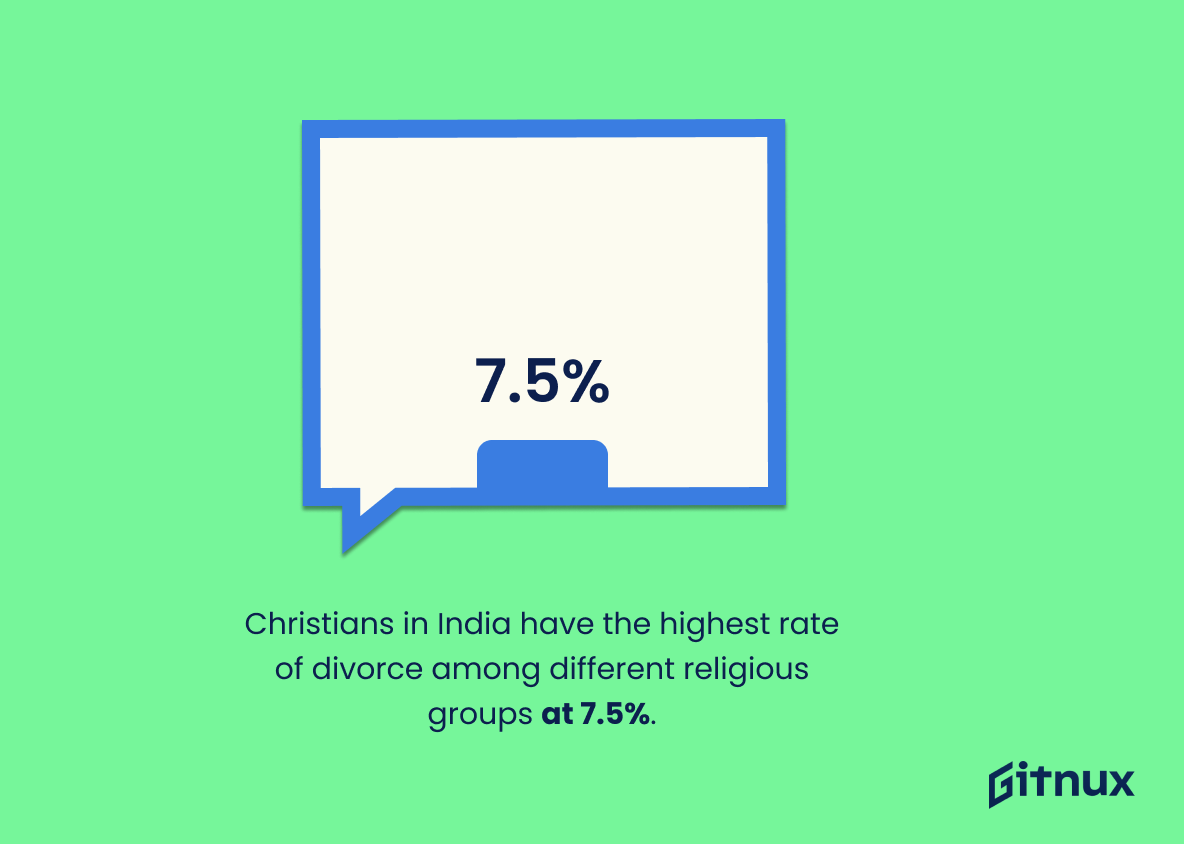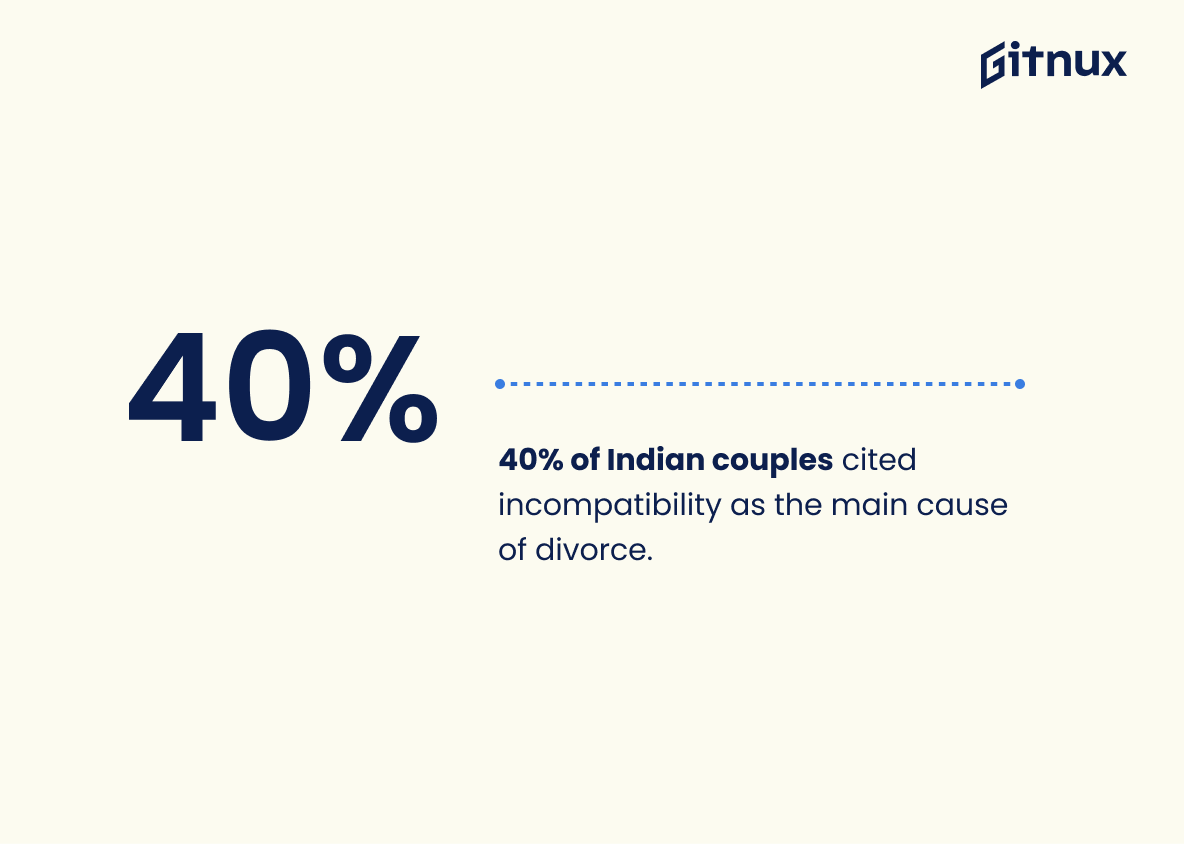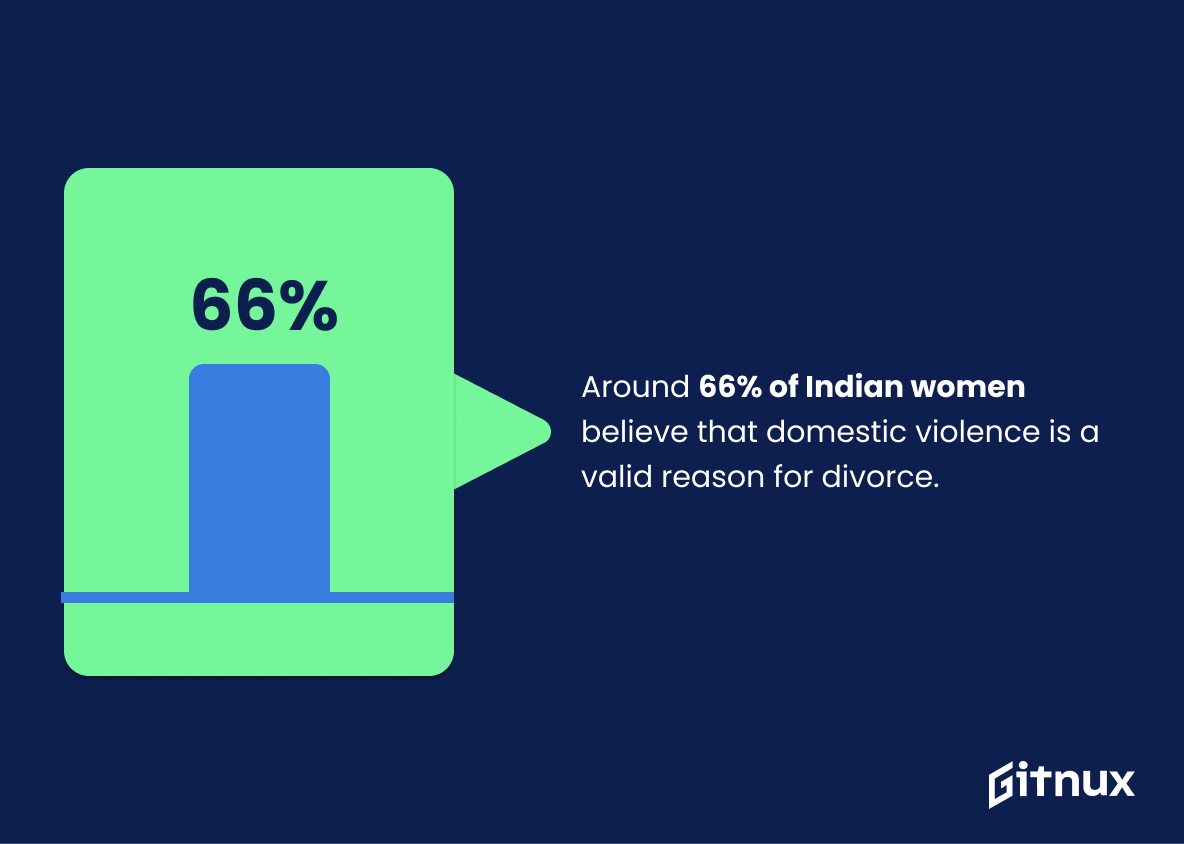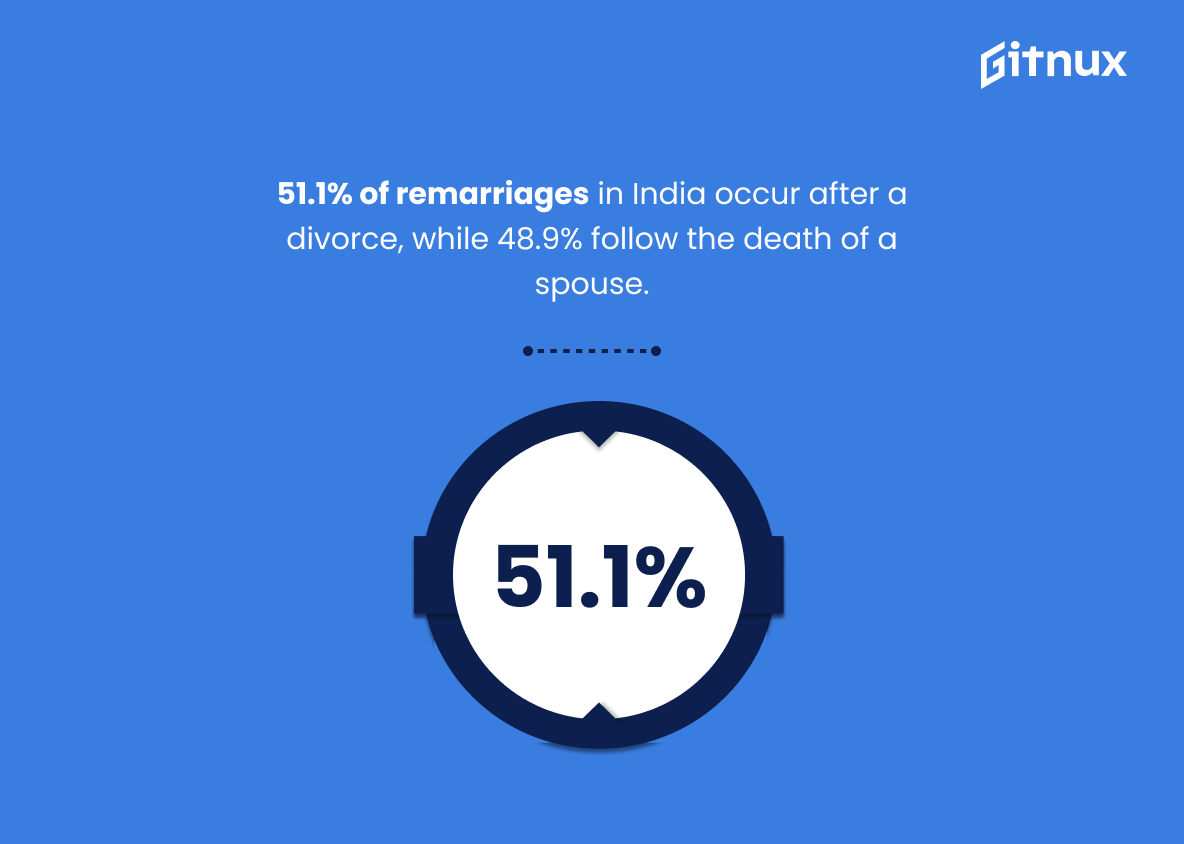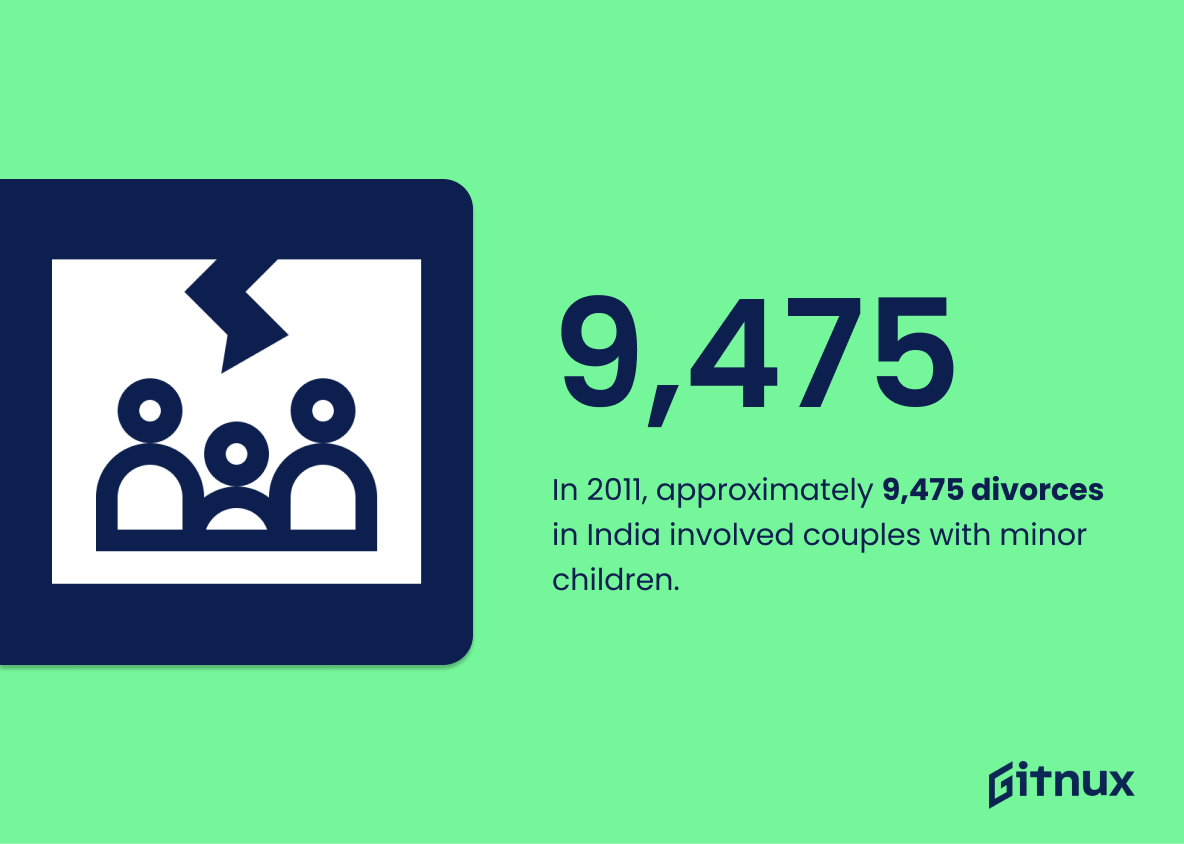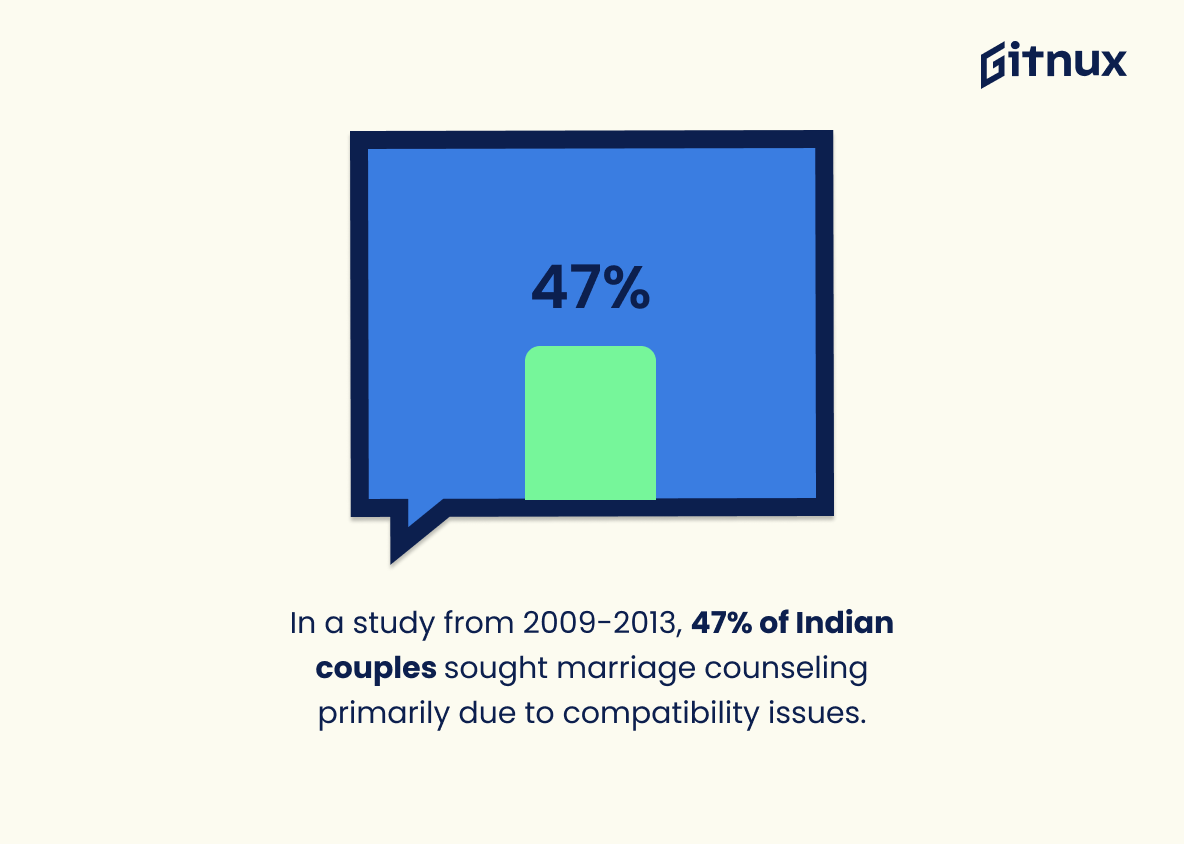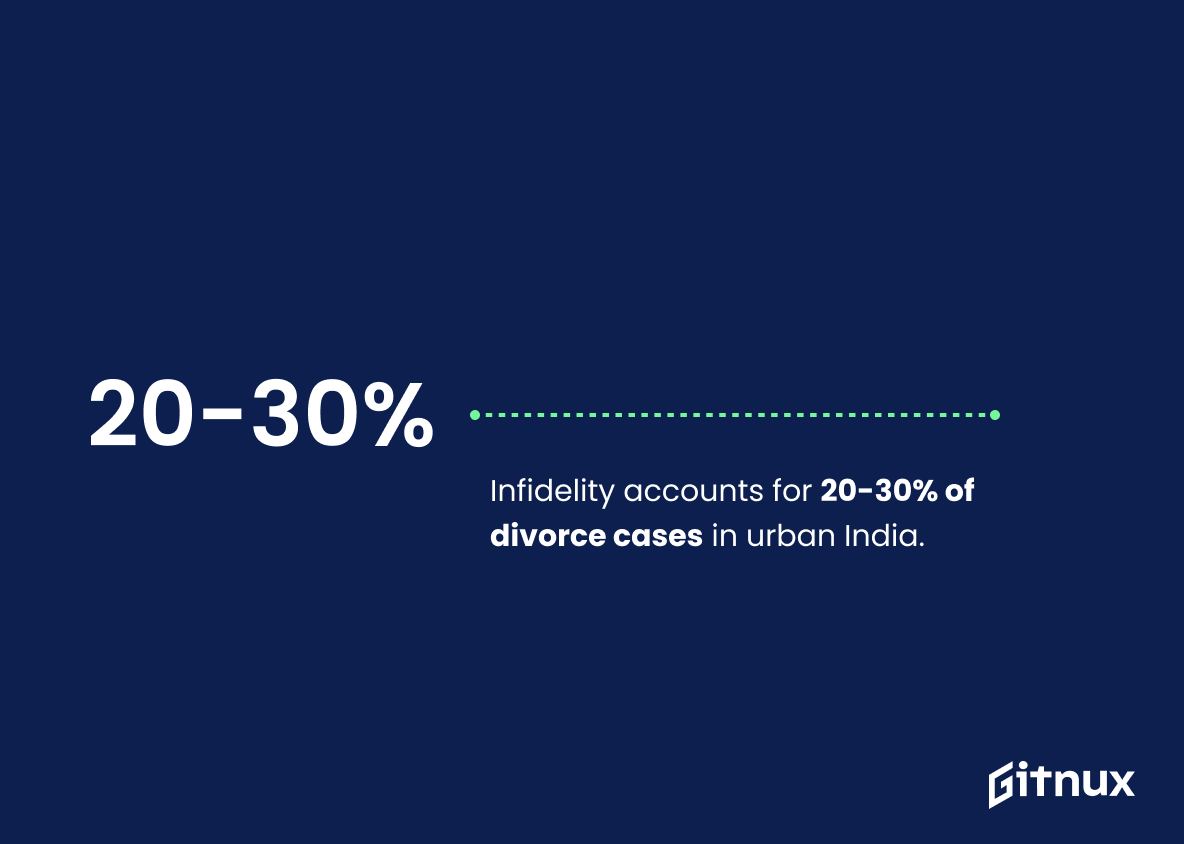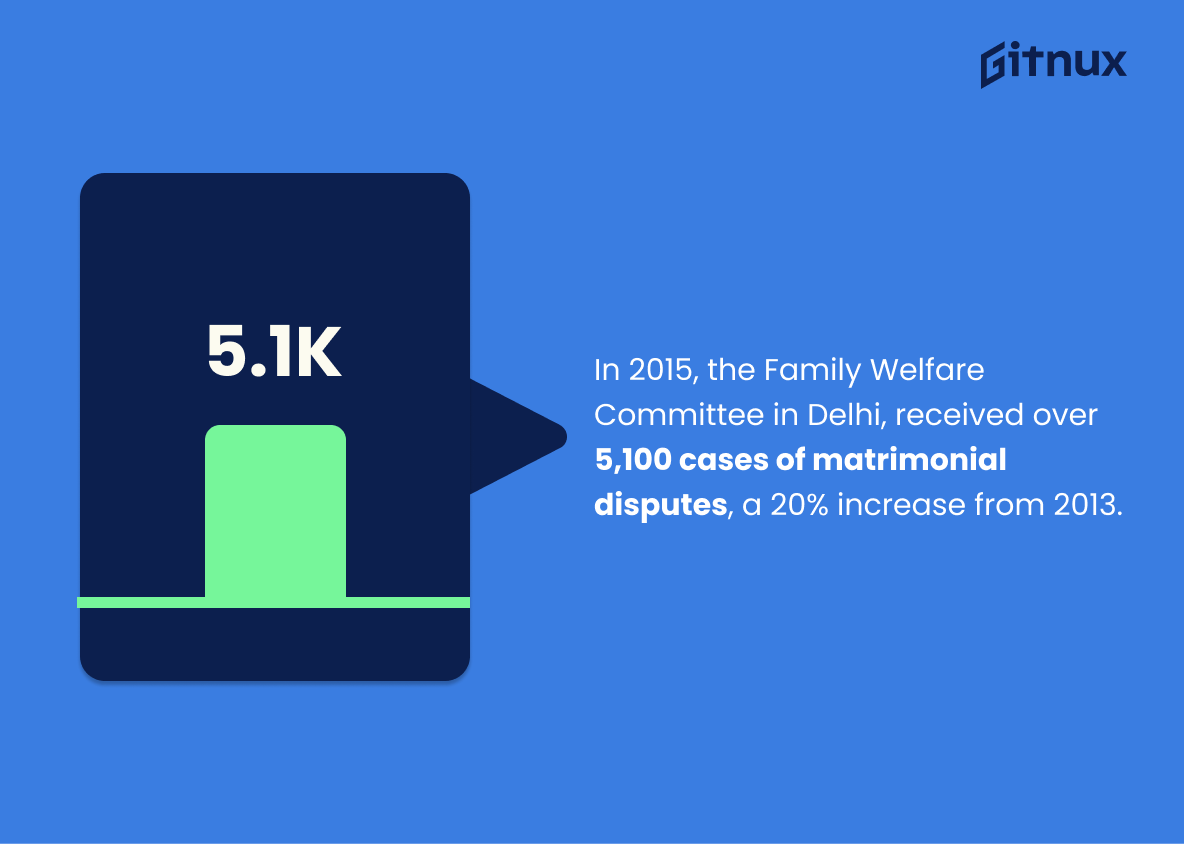Divorce is a difficult and complex process that can have far-reaching implications for individuals, families, and society as a whole. In India, the divorce rate has historically been low compared to other countries around the world. However, recent statistics suggest that this may be changing in some areas of the country. This blog post will explore various Divorce In India Statistics from reliable sources such as journals published by Sage Publications and The Times Of India newspaper. We’ll look at data on overall divorce rates in India; regional differences; age groups affected most by divorces; causes of divorces like incompatibility or infidelity; economic costs associated with them; remarriage trends among divorced couples etc., so we can gain an understanding of how marriage dissolution affects Indian citizens today.
This statistic is a powerful indicator of the prevalence of divorce in India, providing a tangible example of the reality of the situation. It serves as a reminder that divorce is a reality for many couples in India, and that it is an issue that needs to be addressed. Furthermore, it can be used to compare the rate of divorce in India to other countries, and to track changes in the rate over time.
Divorce cases have doubled among women as per the 2011 and 2001 census.
This statistic is a stark reminder of the increasing prevalence of divorce among women in India. It highlights the need for more awareness and support for women who are going through the process of divorce, as well as the need for more research into the causes of divorce in India. It also serves as a call to action for policy makers to take steps to address the issue of divorce in India.
Divorce In India Statistics Overview
In the Indian state of Kerala, there was a 350% increase in divorce cases between 2000 and 2012.
This statistic is a stark reminder of the growing trend of divorce in India, particularly in the state of Kerala. It serves as a powerful indicator of the changing dynamics of marriage in the country, and the need for greater awareness and understanding of the issues that can lead to divorce. It is a call to action for those who are in a position to help couples in crisis, and to provide support and guidance to those who are considering divorce.
The city of Mumbai recorded a 34% increase in divorces between 2015 and 2017.
This statistic is a telling indication of the changing landscape of divorce in India. It shows that the number of divorces in Mumbai has risen significantly in the past two years, suggesting that divorce is becoming more commonplace in the country. This is an important statistic to consider when discussing divorce in India, as it provides insight into the current state of the issue.
Couples below the age of 35 account for 85% of Indian divorces.
This statistic is a telling indication of the changing dynamics of marriage in India. It highlights the fact that younger couples are increasingly opting for divorce, which is a stark contrast to the traditional Indian culture of staying in a marriage no matter what. This statistic is a reflection of the changing times and serves as a reminder that divorce is becoming more accepted in India.
About 20% of divorce cases in India involve couples married for less than one year.
This statistic is a telling indication of the prevalence of short-term marriages in India, and the potential difficulties that can arise from them. It serves as a reminder that even in the early stages of marriage, couples should be aware of the potential for divorce and take steps to ensure that their relationship is built on a strong foundation.
The economic cost of divorce for Indian women ranges around 25-30% of their income.
This statistic is a stark reminder of the financial burden that divorce can place on Indian women. It highlights the fact that divorce can have a significant impact on a woman’s financial security, and that the costs associated with it can be substantial. This is an important point to consider when discussing the statistics of divorce in India, as it can help to inform decisions about how to best support those affected by divorce.
In urban India, 80-90% of divorced women do not receive any financial support from their ex-husbands.
This statistic is a stark reminder of the financial insecurity that divorced women in India face. It highlights the need for greater economic support for women who have gone through the trauma of divorce, and the need for more effective legal mechanisms to ensure that they receive the financial assistance they are entitled to. It is a powerful illustration of the challenges that divorced women in India face, and the importance of understanding the full scope of the issue.
Christians in India have the highest rate of divorce among different religious groups at 7.5%.
This statistic is a stark reminder that divorce is not exclusive to any one religion. It is a reality that affects all communities, including Christians in India, who have the highest rate of divorce among different religious groups at 7.5%. This statistic serves to illustrate that divorce is a universal issue, and that it is important to recognize and address it regardless of religious affiliation.
40% of Indian couples cited incompatibility as the main cause of divorce.
This statistic is a powerful indicator of the prevalence of incompatibility as a cause of divorce in India. It highlights the importance of understanding the dynamics of a relationship before entering into marriage, and the need for couples to be aware of the potential for incompatibility to lead to divorce. This statistic is also a reminder of the importance of communication and compromise in a marriage, as these are key elements in maintaining a healthy and lasting relationship.
Around 66% of Indian women believe that domestic violence is a valid reason for divorce.
This statistic is a powerful indicator of the prevalence of domestic violence in India and the need for greater awareness and action to address it. It highlights the fact that a large proportion of Indian women are aware of the issue and are willing to take action to protect themselves and their families. This statistic is an important reminder that domestic violence is a serious issue that needs to be addressed in India, and that divorce is a valid option for those affected by it.
51.1% of remarriages in India occur after a divorce, while 48.9% follow the death of a spouse.
This statistic is a powerful indicator of the prevalence of divorce in India. It shows that more than half of remarriages in India are the result of a divorce, demonstrating that divorce is a common occurrence in the country. This statistic is important to consider when discussing the divorce rate in India, as it provides insight into the number of people who have gone through the process of divorce and remarriage.
In 2011, approximately 9,475 divorces in India involved couples with minor children.
This statistic is a stark reminder of the reality that divorce in India is not just a legal issue, but a social one as well. It highlights the fact that when couples divorce, it is not just the two adults involved who are affected, but their children as well. It serves as a reminder that divorce can have a lasting impact on the lives of those involved, and that it should not be taken lightly.
47% of Indian couples that sought marriage counseling in a 2009-2013 study cited compatibility issues as the primary reason for seeking help.
This statistic is a powerful indicator of the prevalence of compatibility issues in Indian marriages. It highlights the fact that many couples are struggling to find common ground and are seeking help to bridge the gap. This is an important point to consider when discussing divorce in India, as it suggests that many couples are attempting to work through their issues before resorting to divorce.
Infidelity accounts for 20-30% of divorce cases in urban India.
This statistic is a stark reminder of the prevalence of infidelity in urban India, and how it can have a devastating impact on marriages. It serves as a warning to couples to be mindful of the potential consequences of straying from their vows, and to take steps to ensure that their relationship remains strong and healthy. It also highlights the need for couples to seek help if they are struggling with their relationship, as infidelity can be a sign of deeper issues that need to be addressed.
In 2015, the Family Welfare Committee in India’s capital, Delhi, received over 5,100 cases of matrimonial disputes, a 20% increase from 2013.
This statistic is a telling indication of the rising number of matrimonial disputes in India’s capital, Delhi. It serves as a stark reminder of the increasing prevalence of divorce in India, and the need for more effective measures to address the issue. The 20% increase in matrimonial disputes from 2013 to 2015 is a clear indication that the problem is growing, and that more needs to be done to address it.
Conclusion
The statistics presented in this blog post demonstrate that divorce is becoming increasingly common in India. Despite the overall low rate of divorce, there has been a significant increase over the past two decades, particularly among younger couples and those married for less than one year. In addition to incompatibility issues being cited as a primary cause of marital breakdowns, infidelity and domestic violence are also major contributing factors. The economic cost of divorce can be especially high for women who often do not receive any financial support from their ex-husbands after separation or remarriage.
References
0. – https://www.indialegallive.com
1. – https://www.researchgate.net
2. – https://www.timesofindia.indiatimes.com
3. – https://www.wap.business-standard.com
4. – https://www.ideasforindia.in
5. – https://www.indianexpress.com
6. – https://www.bbc.com
